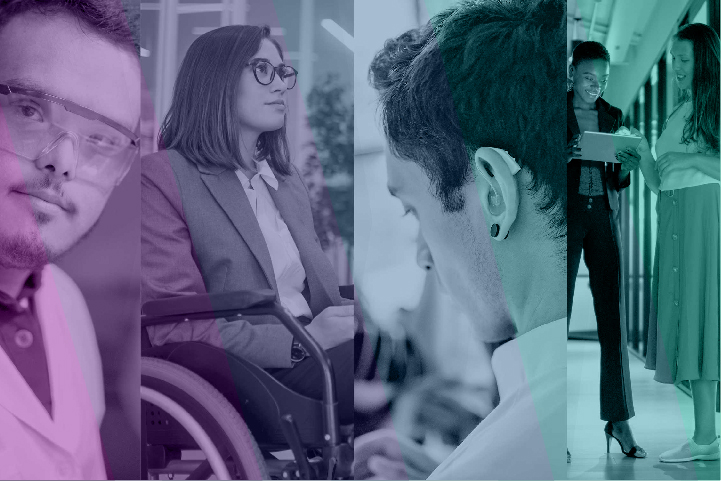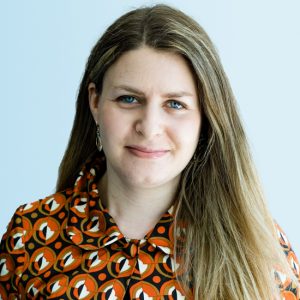Recently I had the privilege and pleasure of moderating Seramount’s National Disability Employment Awareness Month webinar for Diversity Best Practices (DBP) member organizations, which amplified the efforts of individuals and organizations working to support people with disabilities in the workplace.
Sharing the stage with me were Paralympic triathlete and disability inclusion consultant Erin Brown, Disability:IN’s Global Disability Equality Index Director Dorothy Garcia, Sephora’s Vice President of Diversity and Inclusion, George-Axelle Broussillon Matschinga, Accessibility Manager – Distribution Centers Jessica Jolly, and my colleague Sarah Crump, Director, Diversity Best Practices at Seramount.
My Own Experiences
The speakers I invited to the event represented various dimensions of disability: there were those with non-apparent disabilities, those with physical disabilities, and allies. Personally, I was excited to moderate this event because of my lived experience as an autistic woman. I didn’t have this understanding of myself until I was an adult.
I opened the program by sharing how medical gender bias and the differences that exist for autistic girls and women have left us (plus people of color and nonbinary folks) under-diagnosed and subsequently under-supported. The recent uptick in people, especially women, being diagnosed as autistic and with ADHD has led some people to think that there are more neurodivergent people today than before or that people are being over-diagnosed. However, the reality is that we’ve always existed; the nuances of these experiences are just being more clearly understood now.
The Power of Storytelling
A prevalent theme was the connective power of sharing our own stories.
Bahamian Erin Brown shared her personal story of resilience as someone who acquired a disability when she had a leg amputated following a cancer diagnosis. She found “courage in her cancer” and had a shift in perspective in navigating the world with a lens on accessibility, becoming a Paralympic triathlete.
She faced rejection and other barriers to employment. When she couldn’t get a job, she created her own by starting her disability inclusion consulting firm, Erin Brown Connects, to support others on their disability inclusion journeys. She is now also the sole person managing disability compliance at the University of The Bahamas.
Erin personalized her story further by sharing how disability inclusion benefits not just the employment space but families too. She is able to provide for her own family, which in turn impacts the community. “Access is a human right,” she said, and “accessibility today is inclusion tomorrow.”
Dorothy Garcia also shared her lived experience and connection to disability. Her rheumatoid arthritis and osteoarthritis “have affected every single life decision I’ve made as an adult”—from where she lives to where she works to the timing of having children. Seventy-five percent of disabilities are, like hers, non-apparent ones. Growing up in the Philippines, she noticed how people with disabilities are often relegated to the background, and parents with disabled children are less likely to push their children to achieve life goals. She personally hid her disability in the workplace prior to working at Disability:IN, a nonprofit for business disability inclusion.
Disability Is Wide-Reaching and Intersectional
The rate of unemployment for people with disabilities in the United States is 10.1% compared to the unemployment rate among those without a disability, which is 5.1%. The number of unemployed autistic college grads is at approximately 80%, almost 20 times the national average. The consequences of not being understood and supported can be tragic. The rate of suicide for autistic folks is three times higher than for allistic folks.
Looking at disability more broadly, we highlighted how disability is intersectional and shifting: it cuts across every dimension of diversity, and anyone can become disabled at any time. One in four adults in the United States has a disability, 15–20% of the world’s population is neurodivergent, and almost half of adults over 60 have a disability.
Dorothy also shared just how prevalent disability is globally and how serious the barriers can be. At least one billion people, 15% of the world’s population, have a disability. Unemployment among persons with disabilities is as high as 80% in some countries.
How Companies Can Create Inclusive Environments for Employees with Disabilities
Disability allies from Sephora, a member of Disability:IN, shared their practical approach to disability inclusion. George-Axelle Broussillon Matschinga positioned disability inclusion as part of Sephora’s overall DEI strategy of being a DEI employer, retailer, and partner of choice.
Jessica Jolly launched their newest ERG, SephorAbility, and manages the All Abilities Hiring Initiative, a nine-week paid program leveraging local advocacy groups and educational institutions to train and recruit people with disabilities. Since launching in 2017, the program has provided jobs to 246 disabled candidates across four distribution centers. Overall, people with disabilities make up 3% of total Sephora employees and 9% in their distribution centers.
Their keys to a successful disability recruitment program include top-down commitment, buy-in from people leaders (with communication and hands-on trainings), ensuring the interview process is inclusive and the work environment is ADA-accessible, and providing reasonable accommodations and ongoing support. Sephora plans to expand this initiative into their stores and corporate offices soon.
As Dorothy pointed out, the wins for companies are clear: there’s huge market share and spending power of people with disabilities, disability is an asset to companies as opposed to a liability, accessibility is key for clients and customers, and companies have an opportunity to brand themselves as pioneers and drivers of inclusion.
Disability:IN’s Disability Equality Index (DEI) can also help companies on their disability inclusion journeys. It is a comprehensive benchmarking tool helping companies build a roadmap of measurable, tangible actions toward disability inclusion and equality. This year, there were 415 participants (most of whom are Fortune 1000 companies), whose work is measured in the areas of Culture and Leadership, Enterprise-Wide Access, Employment Practices, Community Engagement, Supplier Diversity, and Non-US Operations.
A few key takeaways from their pilot include these: company satellite locations need in-country, local leaders who have lived experience with disability and/or are strong allies for the disability community, and inclusive leadership needs to come from multiple levels, including from the C-suite, an active ERG, and an in-country leader who is an ally.
Attendees Ask Their Pressing Questions
Attendees had some tough questions for the presenters, who were prepared with practical answers. Some key takeaways included these:
- Folks with non-apparent disabilities may opt to not disclose unless accommodations are needed and then disclose solely to HR to ensure legal support is provided. Erin recommended potentially suggesting what accommodations would be most helpful. If folks are more comfortable, they may choose to stand in solidarity with others who can’t hide their disabilities and disclose more broadly to their colleagues.
- It’s important to have true commitment from senior leaders and have a DEI internal census, which anonymously collects data to share in an aggregated way with HR. ERGs also play a critical role in sharing those messages of inclusion.
- Erin reminded attendees of the importance of getting buy-in across the organization and working to address other gaps, including understanding the importance of universal design and employee retention.
The Business Case for Disability Inclusion
The NDEAM webinar exemplified why disability inclusion needs to be an essential component of every organization’s DEI strategy. It isn’t just the right thing to do—it’s also good for companies’ bottom line. Most companies report no additional (or very minimal) cost for accommodations, and companies with inclusive environments for disabled folks report 28% higher revenue. Autistic people alone can be up to 140% more productive than non-autistic people when working with jobs aligned with our skills. Disabled people broadly bring fresh perspective and innovation to the table and are reported to have higher retention rates too. Plus, 87% of US customers would prefer to support businesses employing disabled folks.
We have an opportunity with a new hybrid work model to continue our path to progress by listening to disabled folks, many of whom have been unsuccessfully advocating for remote/flexible work for many years. Remote work also is more inclusive for parents/caregivers with changing schedules as well as people of color who experience fewer microaggressions. Including disabled people in policies and programs for us is essential to meaningful change. Nothing About Us Without Us!
To provide more information, my colleagues Christian, Krista, and I have created a one-pager on supporting neurodivergent folks in the workplace, but these tips can be supportive of those who identify as neurotypical as well. When you design workplaces for the most marginalized, everyone benefits.
Each heritage month, Seramount hosts a celebratory webinar for all employees of our Diversity Best Practices’ member organizations to facilitate engagement, learning, conversation, and community. Interested in learning more about membership? Contact Us.





